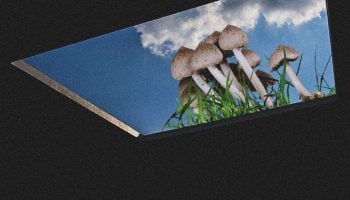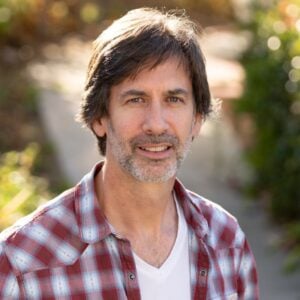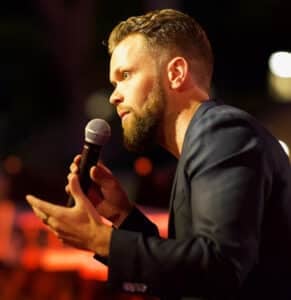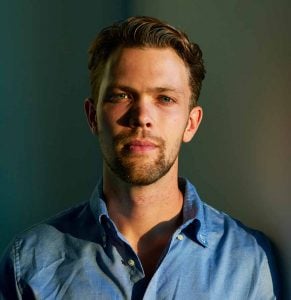Three friends – P, N, and Y – sit at a chest-high table. Platters of food occupy all available space. Ravenously hungry from an early-morning work session, the three friends begin to descend on the food, like lions on a late-night kill.
Just before tasting the first morsel, a bolt of lightning inspiration hits.
Spoken by the elysium tongue of N, his insight pinpointed the precise concept we had attempted to define for hours. With a sudden resurgence in psychedelic use brought on by the Information Age, a new wave is sweeping through America and the Western world.
This new wave is different from traditional use by shamans and different from the counter-culture of the 1960s.
Today’s psychedelic use is defined by the responsible and informed use of micro to moderate doses for creative and therapeutic purposes.
The third wave of Psychedelics is different from the 1st wave (use by shamans) and 2nd wave (use during the counter-culture of the 1960s). Practical, measured use instead of irresponsible, spontaneous consumption is a hallmark of the Third Wave. It is an era, not for ‘dropping-out’ but for integrating psychedelics into mainstream society. It is an era, not to fear psychedelics for their possible negative repercussions, but to embrace psychedelics for their tremendous upside.
With a new era comes a new name.
As N said, “This is the third wave of Psychedelics.”
You may have heard the expression “third wave” before. It was coined to describe the recent embrace of an artisan-based coffee experience.
The first wave of mainstream coffee use was the proliferation of Folgers onto every dining table in the late 19th century. The second wave began with Peet’s in the 1960s and grew to include the ever-prescient Starbucks. And the third wave, the current wave, focuses on producing high-quality coffee sourced from local farms and served in an artisanal style. It is a largely American phenomenon with tendrils spreading elsewhere in the world. The big names of the third wave movement include Intelligentsia, Stumptown, and Counter Culture Coffee.
In Budapest, where I lived during the summer of 2015, there are several third-wave coffee shops. In early-July, N and Y visited Budapest for one week. Every morning (and most afternoons), we worked in a third-wave coffee shop.
On one of the days, we took a break from our normal routine and went to a park outside of Budapest. We each consumed approximately two doses of LSD and spent the entire morning, and much of the afternoon, lying in a meadow overlooking the hills around Budapest.
The day after our trip, we sat down for lunch. And boom! N had his glimmer of insight.
In Budapest, we spent much of our time in third wave coffee shops. For one day, we broke our routine for a psychedelic trip. Thus, Third Wave Psychedelics.
The name fit. It wasn’t just convenient. It also made sense.
The first wave of psychedelic use occurred for thousands of years, in various societies across the globe. Traditional societies used various hallucinogens to inspire shamanistic rituals. Peyote and Psylocibin in Mexico. Ayahuasca in the Amazon. Iboga in sub-Saharan Africa. Marijuana in ancient India and Nepal.
The second wave began with the invention of LSD in 1938 by the Swiss pharmacologist Albert Hoffman. Five years later, Hoffman accidentally self-administered the first dose of LSD.
“The third wave is an era for integrating psychedelics into mainstream society.”
The discovery of LSD led to further research into the traditional uses of all hallucinogenics. This exploration began in the 1950s when R. Gordon Wasson mounted an expedition to Mexico to study the religious use of mushrooms by the Mazatec community.
He published an article entitled, “Seeking the Magic Mushroom,” in Life magazine, sparking an intense interest in the mushroom ritual by beatniks and hippies.
This article paved the way for widespread psychedelic use throughout the 60s. Famous thought leaders like Timothy Leary, Richard Alpert (Ram Dass), and Ken Kesey encouraged the use of psychedelics by the mainstream public.
Regrettably, because of Timothy Leary’s irresponsible evangelizing of LSD, it was heavily abused during this period, earning itself an unsavory reputation in the eyes of many Americans and government officials. In 1968, possession of LSD was made illegal by the United States government.
For the last 40 years, LSD has remained underground. It was still used by the general public (in fact about 10% of Americans report trying LSD at some point in their life) but only on a very occasional basis.
Recently, the dialogue around responsible use of psychedelics has gained steam for two main reasons:
- The loosening legal restrictions on marijuana use in the United States. Because of the loosening legal restrictions, many individuals are taking a second look at illicit drugs with proven therapeutic uses.
- The Information Age of the Internet. In the past, government propaganda has dominated the dialogue around psychedelics. But with the Information Age, individuals have access to factual, balanced information concerning both the pros and cons of psychedelic use.
With the door now slightly cracked, it is up to curious onlookers (like you!) to step in, become informed and then ‘burst the floodgates’ of psychedelic use. Doing this is only possible through the focused dissemination of information and responsible personal experimentation.
“Timothy Leary’s irresponsible evangelizing of LSD led to it being heavily abused.”
The focus of the third wave Psychedelic movement is two-fold: to restart an informative and rational dialogue concerning psychedelic use and to encourage the use of small to moderate amounts for therapeutic and creative reasons.
For example, anecdotal reports of microdosing with LSD emphasize improved productivity, creativity, and innovation. Users report brilliant outbursts in work and personal projects and easy access to the ‘flow’ state described by Mihaly Csikszentmihalyi. They also report a higher level of resonance with life intentions. One user said, “it’s almost like I was born to be like this, and now I get to be like this, on an increasingly regular basis, all thanks to an astonishingly small amount of the substance LSD-25.”
When users consume a moderate amount of LSD, they experience a multitude of benefits, including (but not limited to): unity or oneness with nature; a better understanding of their purpose in life; and an impetus to turn away from material goods as a way of finding fulfilment. There have also been numerous success stories for the therapeutic use of LSD, especially in alcoholics, victims of PTSD, and general psychotherapy.
The other goal of the third wave is to remove the negative stigma associated with psychedelic use. By presenting logical, fact-supported evidence to interested parties, the third wave aims to educate rather than manipulate the public (as was common during the counter-culture movement of the 1960s).
Now is the time to restart a dialogue around the responsible use of LSD and other psychedelics. If you feel as strongly as I do about the long-term upside of micro to moderate doses, please share this article with others.
Further resources:
- “Microdosing: The Revolutionary Way of Using Psychedelics,” published by High Existence
- “The Psychedelic Explorer’s Guide – Risks, Micro-dosing, Ibogaine, and More,” a podcast published by thought leader Tim Ferris.
- “Are Psychedelic Drugs the Next Medical Breakthrough?” another podcast by Tim Ferriss.
- Psychedelics Could Be the Next Big Thing in Mental Healthcare from HuffPost







“Timothy Leary’s irresponsible evangelizing of LSD led to it being heavily abused.”
This statement has zero data to back it up. It’s the same demonization technique that effected many of the pioneers on this subject.
Your using that statement twice with no supporting story line or data is more irresponsible than anything Tim Leary did.
You also weren’t around and have absolutely no idea what your talking about in general.
I find your own propagandizing to
indicate a level of narcissism that will not be affected by micro dosing. Your generation which I refer to as Jizmennials don’t do research. You plagiarize because you were spoiled by your helicopter parents and believe you’ve invented everything on the planet all over again. Poor babies. Yeah micro dosing! That’s the ticket!